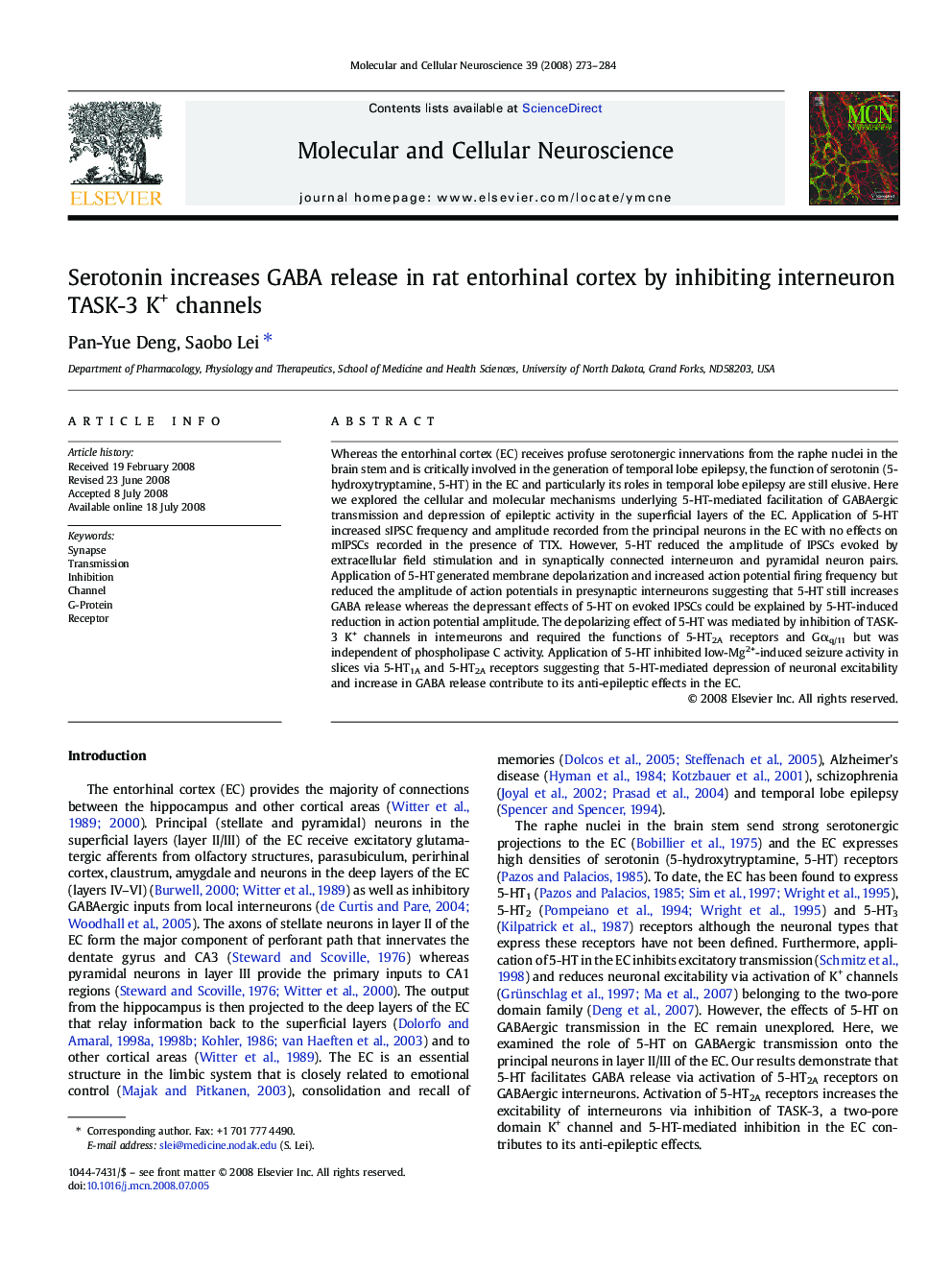| Article ID | Journal | Published Year | Pages | File Type |
|---|---|---|---|---|
| 2199155 | Molecular and Cellular Neuroscience | 2008 | 12 Pages |
Whereas the entorhinal cortex (EC) receives profuse serotonergic innervations from the raphe nuclei in the brain stem and is critically involved in the generation of temporal lobe epilepsy, the function of serotonin (5-hydroxytryptamine, 5-HT) in the EC and particularly its roles in temporal lobe epilepsy are still elusive. Here we explored the cellular and molecular mechanisms underlying 5-HT-mediated facilitation of GABAergic transmission and depression of epileptic activity in the superficial layers of the EC. Application of 5-HT increased sIPSC frequency and amplitude recorded from the principal neurons in the EC with no effects on mIPSCs recorded in the presence of TTX. However, 5-HT reduced the amplitude of IPSCs evoked by extracellular field stimulation and in synaptically connected interneuron and pyramidal neuron pairs. Application of 5-HT generated membrane depolarization and increased action potential firing frequency but reduced the amplitude of action potentials in presynaptic interneurons suggesting that 5-HT still increases GABA release whereas the depressant effects of 5-HT on evoked IPSCs could be explained by 5-HT-induced reduction in action potential amplitude. The depolarizing effect of 5-HT was mediated by inhibition of TASK-3 K+ channels in interneurons and required the functions of 5-HT2A receptors and Gαq/11 but was independent of phospholipase C activity. Application of 5-HT inhibited low-Mg2+-induced seizure activity in slices via 5-HT1A and 5-HT2A receptors suggesting that 5-HT-mediated depression of neuronal excitability and increase in GABA release contribute to its anti-epileptic effects in the EC.
